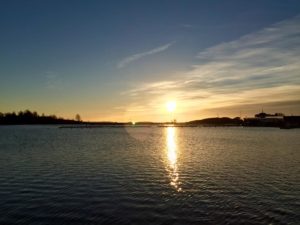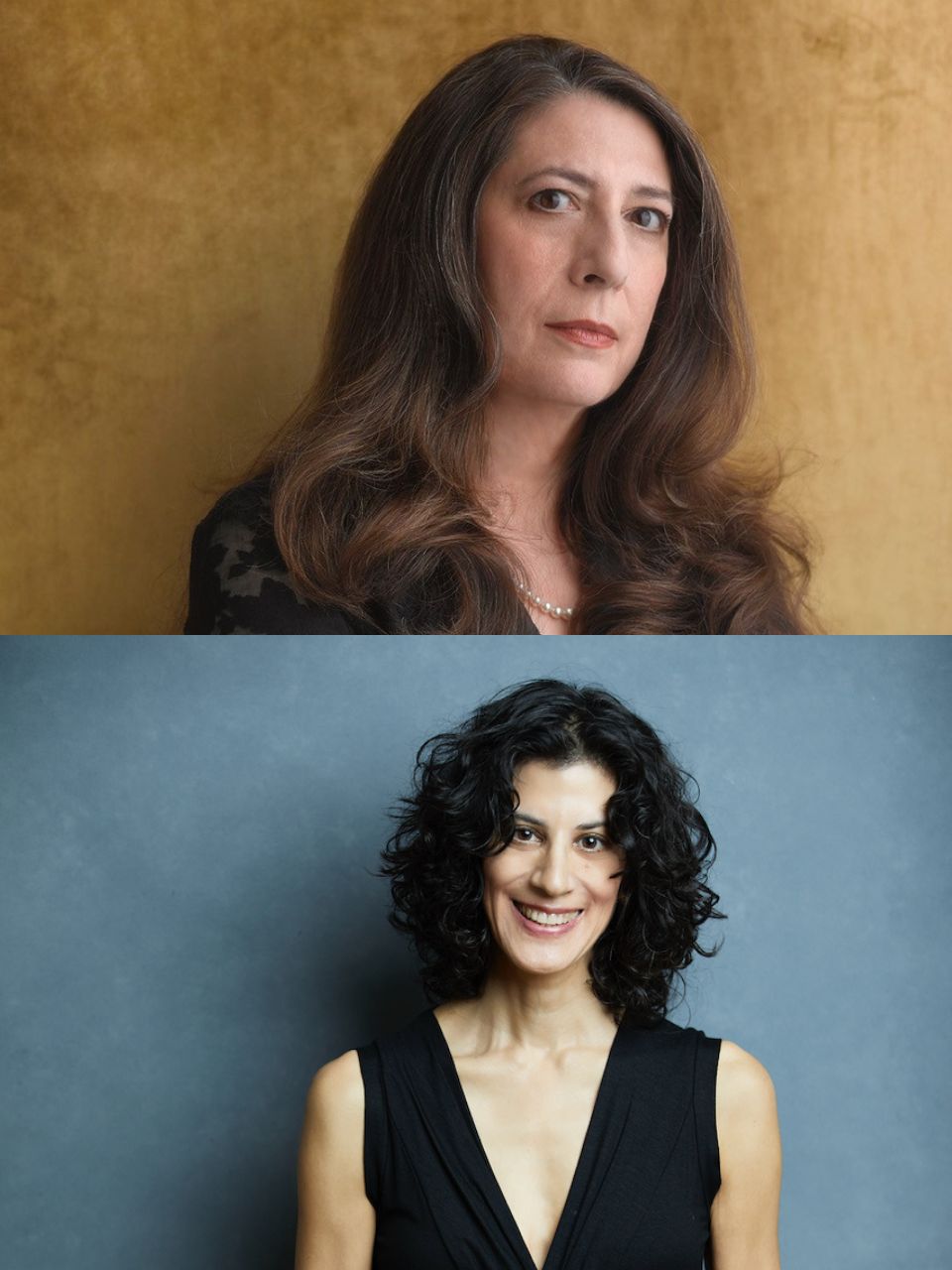With ANTTI TUOMAINEN

One of Antti Tuomainen’s favorite places in Helsinki is the beautiful Kaivopuisto park and the Baltic shore on the southernmost tip of downtown Helsinki, pictured here on a December morning.
Your name: Antti Tuomainen
Current city or town: Helsinki, Finland
How long have you lived here: 44 years
Three words to describe the climate: Four distinct seasons.
Best time of year to visit? Depending on how you wish to find it. There’s a good chance of heavy snow in January/February and the city is beautiful then. Then there’s July and August when it gets green, warm, and altogether summery.
1. The most striking physical features of this city/town are . . .
Helsinki is on the Baltic shore. The city is built on peninsulas, islands and shores; the sea is everywhere. Another thing you’ll notice (during summer months, of course) as the plane starts its descent is how green it is. Trees and parks are everywhere. Keskuspuisto (Central Park is a direct translation) is right in the middle of the city and, if you go north, you can follow it all the way out of the city. The downtown area is compact, a mix of old and new, pleasantly walkable, and, as you’ll quickly notice, quite low-built by international standards. This is due to building restrictions. I walk through the center of town twice every day from home to my office/studio and back and I enjoy it: it’s a beautiful city, it’s different with every season, and the center is architecturally interesting and naturally almost always busy. Unless of course the north wind blows on a winter day. You’ll find more people walking on the moon then.
2. The stereotype of the people who live here and what this stereotype misses . . .
The Finns are stereotypically said to be reticent and reserved. I’ve found this to be actually true, at least to some extent. We sometimes joke about Finnish small talk. Which doesn’t really exist, hence the jokes. But on the bright (or the darkly humorous, which ever you prefer) side, you can get right down to business and do it with very few actual words.
3. Historical context in broad strokes and the moments in which you feel this history . . .
Finland became independent in 1917. Prior to that, Sweden and Russia went back and forth for a few centuries. (Finland was autonomous, however, it was more a geographical issue; at times a very tragic and bloody issue.) This history with the two neighboring countries is visible and audible in Helsinki in two ways today: Swedish is the second official language in Finland (Finnish is naturally the other one) and you’ll notice that on everything from street names to opening times as they are in two languages. And you’ll notice statues and churches from the Russian era. Also, if you get hungry and/or thirsty and really wish to feel history, there’s a re-opened restaurant where you can sit down at the bar where Jean Sibelius once sat and drank. Mind you, he sometimes sat there for a week and definitely did not compose anything in that time. I don’t know if I can entirely recommend that.
4. Common jobs and industries and the effect on the town/city’s personality . . .
Helsinki is the capital and the biggest city in Finland. This means that it is the main hub for culture, business, and politics. Like many capital cities, this means that there is no single factory and no single manufacturing area or such to distinguish it, but rather the everything factor. There has been, for some time now, some kind of a gold rush on IT start-ups, which started perhaps (a long time ago) with Nokia and then Rovio’s Angry Birds, and since then with many, many others such as SuperCell’s Clash of Clans.
5. Local/regional vocabulary or food?
Helsinki used to have a very specific dialect called Stadin Slangi (direct translation would be something like The Town Slang) spoken especially in the working class neighborhoods of Punavuori, Kallio, and Sörnäinen from the 1910s to maybe 1950s. It was a mixture of the “spoken” Finnish and loan words heavily and primarily from Swedish and some from Russia. It almost disappeared but in the last maybe 20 years there has been a revival to keep it alive. There’s even a Donald Duck album translated into Stadin Slangi now.
Antti Tuomainen is an award-winning Finnish writer whose books have been published in 28 countries.




